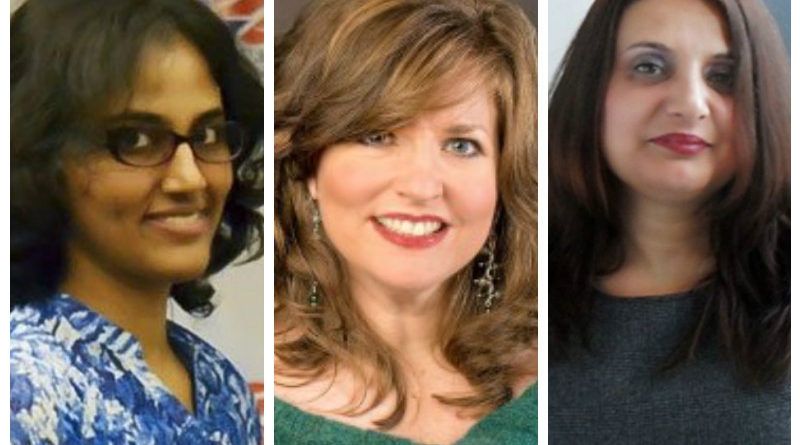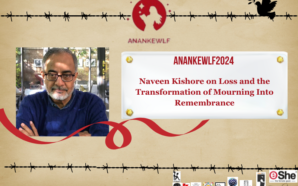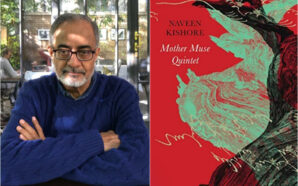To read the second article of the two-part series, click here.
Prosperity of the world’s present and future generations lies in sustainable development where all needs are met through such careful, efficient strategies and deliberations, which refrains from compromising environmental, social and economic resources. Essential to development that has both short and long term benefits is the ability to leverage women – touted as the next billion – and exploring their potential especially in the fields of Science, Technology, Engineering and Math (STEM).
Striving to make a different and achieve sustainability in socio-economic and environmental spheres entails inclusive discussions, and thus the need to seek solutions with a gender lens on issues at hand. For instance, in the case of Climate Change, “women are more vulnerable to the effects of climate change than men—primarily as they constitute the majority of the world’s poor and are more dependent for their livelihood on natural resources that are threatened by climate change. Furthermore, they face social, economic and political barriers that limit their coping capacity. It is thus important to identify gender-sensitive strategies to respond to the environmental and humanitarian crises caused by climate change.”
Another issue core to sustainable development is women’s education. Not limited to women’s inclusion in STEM education, it is certainly not untrue to say that increasing female literacy rate is actually an effective global investment. According to a research paper: “In developing countries, reducing gender inequality in literacy and in primary, secondary and management education is essential to reducing poverty and accelerating sustainable development.”
Aligning our vision with UN Sustainable Development Goals, on April 25th, 2017 (today), Ananke launches its groundbreaking digital Internship program mainstreaming Gender and Sustainability. We commence our project with an informal discussion with women trailblazers about their personal journey’s and views on women’s economic empowerment through STEM to achieve sustainability.
 Despite a lot of research to the contrary, some still believe there are fewer women in STEM fields and professions as they are unfairly presumed innately not as good at math or science as men. It is so important to breakdown stereotype and celebrate women in STEM. We need to empower girls within the home and get away from such social conditioning.
Despite a lot of research to the contrary, some still believe there are fewer women in STEM fields and professions as they are unfairly presumed innately not as good at math or science as men. It is so important to breakdown stereotype and celebrate women in STEM. We need to empower girls within the home and get away from such social conditioning.
We need to look at social factors for instance jobs that are not locally available and parents may not allow daughters to travel.
I think it’s wonderful to see women are in fact breaking down barriers and getting into STEM. It is high time we celebrate such trailblazers. True empowerment is when we give our girls the power and enable them to have control over their futures as it is critical for OUR future, for sustainable development to invest in girls’ education.
Whilst science, technology, engineering and mathematics (STEM) have a profound impact on our everyday lives, we continue to see a lack of engagement from students globally.
It is so important that we have scientists and especially engineers to address climate change and the steady increase in the world’s human population. We need to look at how STEM supports girls to work themselves out of poverty and early child forced marriages. Girls in STEM are becoming the main breadwinners too. We need Role Models and champions to showcase positive impact.
Without the new generations of scientists and engineers, we will fail to achieve the UN SDGs.
We need more STEM clubs in schools and colleges and we need to have a big conversation regarding SDGs and STEM
Mandy Sanghera
Human Rights Activist
 What made you get into STEM?
What made you get into STEM?
I always dreamed of becoming a doctor, but I didn’t have the funds to put me through medical school since it is a rather expensive program. However, my interest in biology has remained throughout. Although I don’t work in medicine, in recent years, I’ve been very interested in coding and developing websites and mobile apps. While already at work, I couldn’t find time to study formally, so I taught myself to code mobile apps and websites. I’ve designed a few websites on my own, and am working on designing an app for The Red Elephant Foundation on my own.
Where did you first hear about STEM?
STEM is probably encoded in my body memory. My grandparents and parents often told me when I was a child that I could be anything I wanted – and encouraged me to take up the sciences, and encouraged my dream to become a doctor – but, that it wasn’t fulfilled is not a regret at all. I’ve had great experiences exploring STEM on my own.
What is your current job?
I am the Founder CEO of The Red Elephant Foundation, a writer, an author, an artist and an activist.
What’s your views on STEM?
The world is built on a foundation of STEM. It isn’t a function of any gender to have a right over the domain.
How can we empower women through STEM?
More open source resources and free education programs that welcome young women into the world of STEM, and prevention of exclusion of women on account of gender from STEM need attention.
Kirthi Jaya Kumar
The Red Elephant Foundation
www.redelephantfoundation.org
www.facebook.com/TheRedElephantFoundation
 Early Beginnings
Early Beginnings
As a young student of a particular era, I was encouraged to pursue some avenues of teaching or social work as were other girls of my generation. I began down that path however was always intrigued by Science and Business and creating something tangible. I worked as a medic at one point considering deviating to medicine, however a collaboration with my father pulled me into Clean Tech Engineering, which satiated my passion for environmental responsibility.
On Targeted Innovation and Sustainability
Together we worked to build energy-saving technologies such as HVAC management systems and most recently a hydrogen fuelled airplane. We take technologies of interest out of the lab and develop and commercialize because whereas industrialization destroyed the environment we feel that through targeted innovation we can slowly rectify that damage without halting progress.
Upon my father’s retirement I have been chosen by the Board Of Directors to follow him as President of EcoCentury Technologies.
Enabling Women in STEM
Enabling Women to pursue a career in STEM is tied to inspiring the passion for Sciences in young girls and removing doubts about their ability to do so. We need to engage girls at an early age without “pinking” STEM and then enable graduates to rise to the positions they are destined for without hindrance of choices regarding “female responsibilities”…Work in the home, child care, etc. Too many brilliant minds are being wasted, slowing innovation and losing opportunities because of this. We also need to encourage and enable women who have Disabilities to pursue careers in STEM as through Education and Economic Empowerment we can harness these untapped resources further pushing innovation in fields that are easily flexible in regard to workplace accessibility.
We have a responsibility to groom future generations of leaders in STEM and provide them with the tools to succeed, much as I was. There is a movement to go one further than “mentorship”, on to “sponsorship” of rising stars in STEM to ensure success. Success at gender equality in STEM will truly translate to Global Success in Innovation.
Kerry Gibson
President, EcoCentury Technologies
UN Women
Planet 5050 Champion, UN Women
778-996-2669
KGibson@EcoCentury.ca
www.ecocentury.ca
www.unwomen.org
www.heforshe.org











